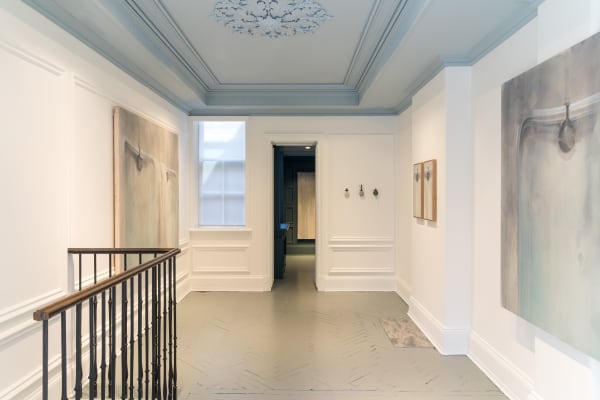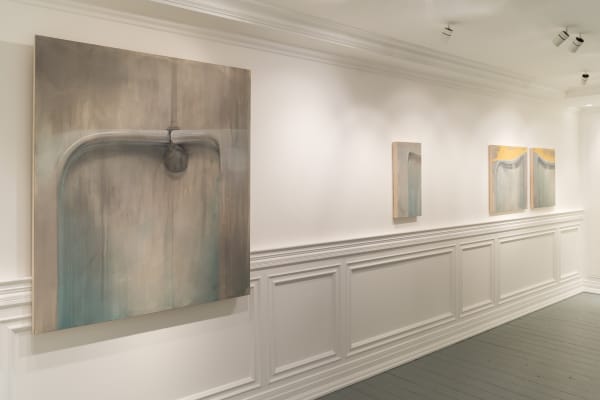Graham Silveria Martin: Talisman
Silveria Martin’s body of work engages deeply with Muñoz’s theory of the Queer Utopia: a state of queerness never realised but felt through its potentiality. In both his paintings and sculptures, the urinal is symbolic of a queer liminal space, charged with past and future coded exchanges, fleeting encounters and intimate acts.
In the artist’s own words, “There is this nonliteral space, the objects are there and not there and they come in and out of focus, falling out of figuration and into something abstract”. Silveria Martin’s use of water, in his paintings, bleeds the paint into the canvas, making certain edges of the urinal blurry as though one is peering into an unfamiliar, slippery memory. This shifting focus is emphasised by the multiple thin layers of gesso that cover the surface of the paintings. Still, in the most reflective surfaces, the glazed porcelain is rendered so sharply that one can almost hear the echo of a footstep on tile.
Silvera Martin’s delicate play of the porcelain’s shadows and reflective surfaces do not reflect back the identity of any person. However, his militant, formal attention to light imbues these surfaces with an incredible sensuality. Their curves appear corporeal, like clavicles or silhouetted torsos; each mantle pinches the plumbing tenderly– just enough to still let it hang. Silveria Martin tenderly treats his subject with equal respect to figures who might have posed in his studio. Yet, witnessing these works, one may become attuned to the rhythms of absence in the negations of space.
Silveria Martin’s thorough investigation into a single subject, such a charged queer space offers the facade of sameness yet simultaneously challenges this notion since this serial repetition is exactly what conjures desire. He replicates the historical objects tenfold in an extensive enquiry that highlights the possibilities of their prior ritualistic use and informs their futurity. This ritualistic repetition ultimately demands comparison and reflection - a consideration of presence and absence, history, present and future.




